Banksy, the elusive graffiti artist, has captured the art world’s imagination with his thought-provoking works that combine social commentary with an unmistakable style. His art pieces have become cultural touchstones and have been the subject of countless debates, discussions, and analyses.
This blog post will delve into Banksy’s artistic legacy and explore some of his most notable pranks. From his famous Di-Faced Tenners, which criticised the royal family and the media’s treatment of Princess Diana, to his shredding of “Girl with Balloon”, Banksy has left an indelible mark on the art world that continues to inspire and challenge us today.
“The greatest crimes in the world are not committed by people breaking the rules but by people following the rules” – Banksy
We will take a closer look at Banksy’s daring pranks over the years and the inspiration that drives him. Join me on this journey of discovery as we examine Banksy’s artistic legacy and explore this enigmatic artist’s most notable pranks to date.
1.
Rivington Street Solo Show, London 2000
On May 31st, 2000, Banksy organised his first known solo exhibition in the Rivington Street Tunnel in London.
The exhibition showcased a series of stencil artworks spray-painted onto the tunnel’s walls. Banksy’s inspiration for this exhibition came from a discussion with his friends about holding an exhibition in London without seeking permission from anyone. As they walked through a tunnel in Shoreditch, someone suggested that painting pictures in such a dump was pointless.
A week later, Banksy and his friends returned to the same tunnel with two buckets of paint and a forged invoice from a fictitious art organisation. They put up the artwork in just 25 minutes and held an opening party with beers and hip-hop music playing in the background from a transit van.
Banksy’s Rivington Street Solo Show marked a turning point in the street art movement, paving the way for other artists to showcase their work in unconventional spaces outside of the traditional gallery setting.
Banksy – Banging your head against a brick wall
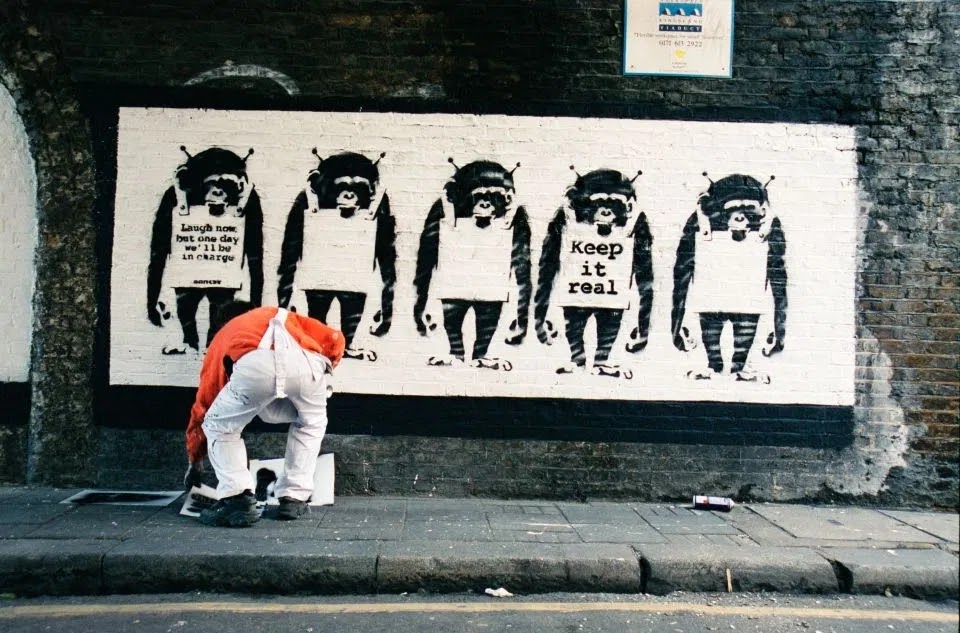
Banksy, London Rivington Street, 2000. Image Copyright Steve Lazarides “Banksy Captured”
2.
Tate Britain, London, 2003
In October 2003, Banksy executed an audacious plan that would go down in history as one of his most memorable pranks. Disguised as a pensioner, he walked into the halls of Tate Britain, one of London’s most prestigious art galleries. Banksy placed one of his own creations in a vacant slot on one of the gallery’s walls.
The painting, titled “Crimewatch UK Has Ruined the Countryside For All of Us,” was a shortcut for Banksy to exhibit in the Tate Britain. Banksy discovered the unsigned oil painting in a street market; he believed that vandalising it with police tape conveyed how many people view the world today. He suggested that the public no longer sees the world through the eyes of artists such as Constable, who depicted serene landscapes with hay and rivers. Instead, people are more paranoid and fearful of violent crime and paedophilia, which he claimed was reflected in his painting.
A caption glued next to the painting read: “This new acquisition is a beautiful example of the neo post-idiotic style. Little is known about Banksy, whose work is inspired by cannabis resin and daytime television.”
For a few hours, the painting hung on the wall, drawing curious glances from passersby who were none the wiser. But fate had other plans, and the painting eventually crashed to the floor, shattering the illusion and revealing the true identity of its creator.
The stunt caused a stir in the art world, exposing the elitism and exclusivity of the traditional art gallery system and cementing Banksy’s reputation as a master of the unexpected.
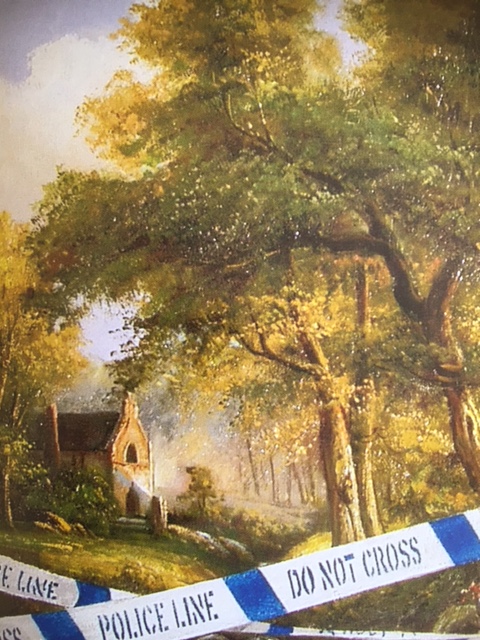
“Crimewatch UK Has Ruined the Countryside For All of Us”, Tate Britain. Image copyright Banksy.
3.
The Louvre, 2004
The Louvre Museum, situated in the heart of Paris, is widely acclaimed for its extraordinary assortment of priceless artworks that have stood the test of time. The museum boasts a plethora of celebrated works of art and Banksy caused a stir when he targeted the world-famous Mona Lisa in the Louvre’s collection in 2004.
Dressed in an elaborate disguise and an act of rebellion, Banksy slipped past museum security and hung his own version of the painting, featuring a subversive acid-smiley face.
“My sister threw away loads of my drawings when I was a kid and when I asked her where they were she shrugged and said “Well it’s not like they’re ever gonna be hanging in the Louvre is it?”
Banksy Installation in the Louvre, Paris 2004
Despite the controversy surrounding the incident, the painting surprisingly garnered much attention and interest, especially from collectors. In 2006, the painting was sold for £56,000.
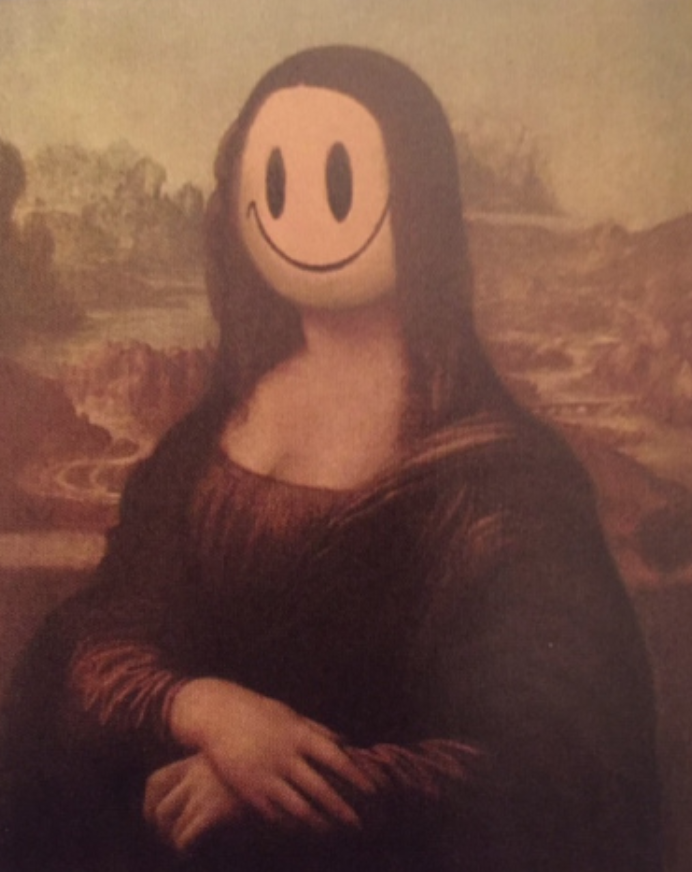
Banksy “Mona Lisa Smile”, The Louvre, Paris. Image Copyright Banksy
4.
Di-Faced Tenners, 2004
Banksy created a series of counterfeit £10 notes named the “Di-Faced Tenner”. These notes were unique in that they featured Princess Diana’s head and the words “Banksy of England” instead of the usual “Bank of England”. The notes contained hidden messages criticising the royal family and the media’s treatment of Princess Diana.
Banksy’s Di-Faced Tenners were not just simple forgeries. They were carefully crafted to include subtle alterations that added depth and meaning to the art piece. For example, the addition of the statement “I promise to pay the bearer on demand the ultimate price” was a sharp comment on the fate of Princess Diana. On the back of the note, underneath the portrait of Charles Darwin, Banksy added the ominous statement “Trust No One”, suggesting a deep distrust of authority and institutions.
Banksy released the first Di-Faced Tenners in 2004 by dropping them into crowds at various events and exhibitions. These included the Notting Hill Carnival, Reading Festival, and Liverpool Street tube station during rush hour. Banksy created £1 million worth of notes for his 2004 stunts, circulating approximately 100,000 Di-Faced Tenner notes.
Even though reproducing banknote images is a criminal offence under the Forgery and Counterfeiting Act of 1981, Banksy has never been prosecuted for counterfeiting charges.
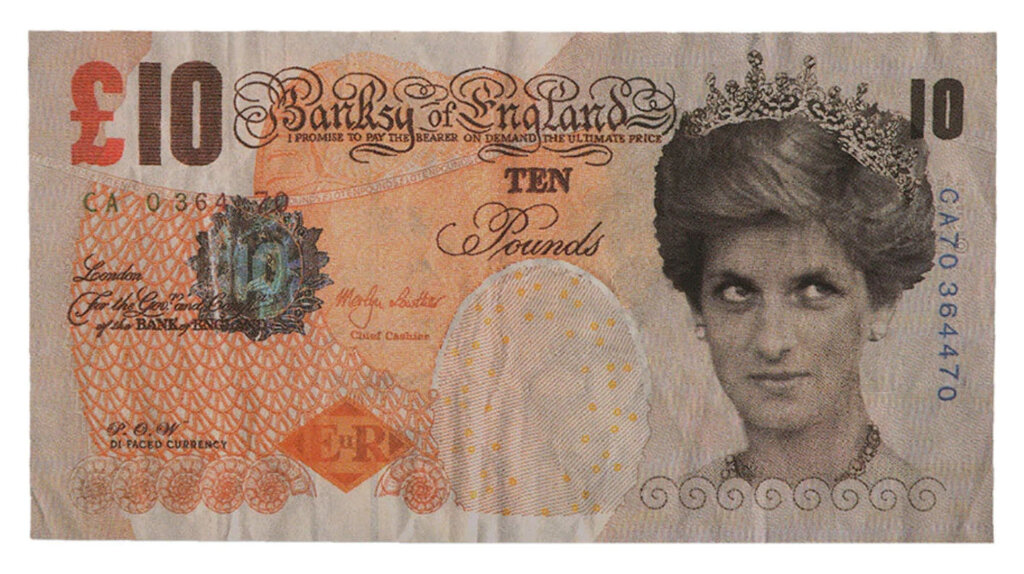
Banksy – Di-faced Tenner (Front)
5.
The British Museum, 2005
In 2005, Banksy was back pranking museums again, installing an intriguing piece of concrete in the Roman Britain Gallery of the British Museum. The artwork, called “Peckham Rock,” featured a drawing of a person with spikes on their back and a shopping cart, with a bison with arrows in the distance.
Its message was a commentary on the value and worth of art and challenged the institutionalised nature of museums. By blending in with the museum’s collection, Banksy’s artwork raised questions about what is considered museum-worthy and who gets to decide.
The fake label on the artwork, which mimicked standard museum practice, added to the commentary by suggesting that the piece was a “finely preserved example of primitive art” from the “Post-Catatonic era,” with little else known about the artist besides the moniker Banksymus Maximus.
After two days of going unnoticed, the British Museum took down the artwork after learning about it through Banksy’s website.
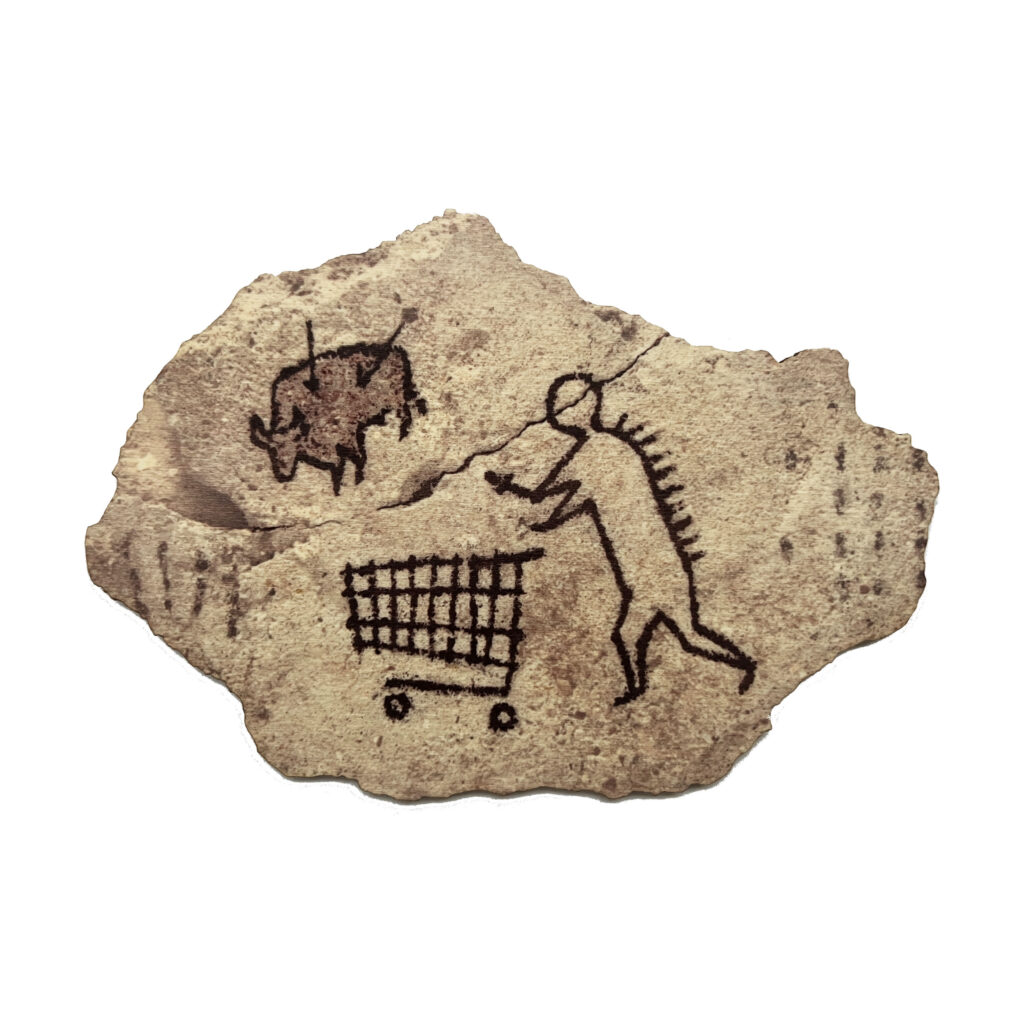
Banksy – Peckham Rock
6.
Paris Hilton Debut CD, 2006
In the later part of 2006, Banksy created a stir in the UK record stores with his rebellious act. He replaced nearly 500 copies of Paris Hilton’s debut CD with his own cover art and remixes by Danger Mouse. Banksy, who is known for his unique style and satirical artwork, replaced Hilton’s original songs with his own version of remixes, which included titles such as Why am I Famous?, What Have I Done? and What Am I For?
Apart from the remixes, the art was also changed, which featured an image of Paris Hilton topless, with a dog’s head instead of her own. This image was intended to satirise Hilton’s celebrity status and her portrayal in the media.
Banksy’s action was seen as an act of rebellion against the mainstream culture, which promotes celebrity status and consumerism.
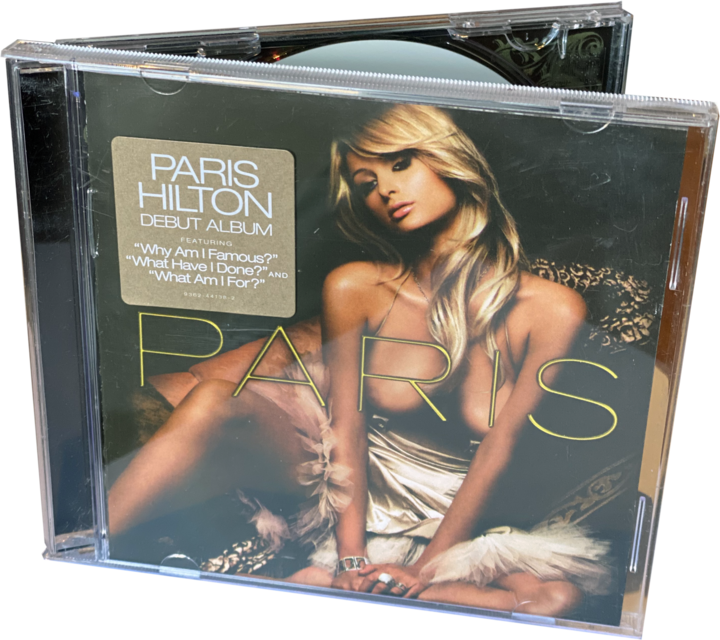
7.
Guantanamo Bay Detainee
at Disneyland, 2006
Banksy created a thought-provoking and life-like inflatable replica of a detainee from the notorious Guantanamo Bay detention camp. In a daring move, the artwork was surreptitiously placed behind the rails of Disneyland’s popular Big Thunder Mountain Railroad ride, creating a surreal and unsettling juxtaposition between the cheerful and whimsical atmosphere of the theme park and the grim reality of the detainee’s plight.
The striking artwork was meticulously designed to convey the inhumane treatment and suffering of the detainees held at the camp. The artwork quickly captured worldwide attention, leaving behind controversy and conversation. Park authorities eventually removed the artwork.
8.
New York’s Central Park
In one of his most authentic pranks and during his month-long residency in New York for “Out in the Open”, Banksy set up an inconspicuous booth in the bustling Central Park of New York City, selling original signed canvases for $60 each.
The unsuspecting vendor, who had no idea he was selling Banksy’s prized works of art, displayed the artwork on a street corner, where it remained relatively unnoticed by most passersby. Although the artwork was genuine Banksy pieces, it failed to attract many buyers, and only a handful of curious individuals managed to purchase them, completely oblivious to the true value of their acquisition.
The pieces were eventually sold to three individuals for a mere fraction of their actual worth, emphasising the art world’s irony and underscoring the subjective nature of art’s value.
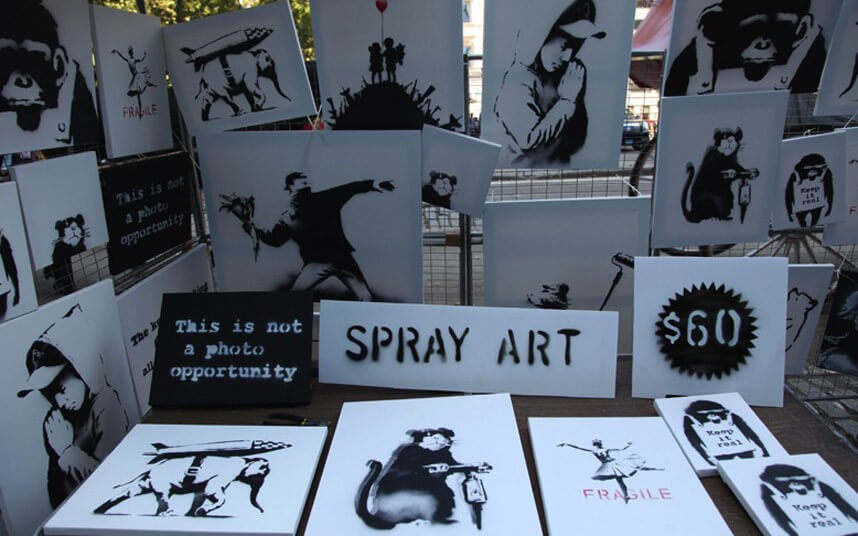
Banksy – Better Out than In – New York Residency – Street Art Intervention 2013. Image copyright Banksy
9.
Love Is In The Bin, 2018
On 5 October 2018, a version of Balloon Girl was sold at Sotheby’s London for just over £1 million. While the crowd was still applauding the record result and smiling, a remote sent the canvas through a shredder hidden within the frame, partially shredding the picture.
The shredded canvas became a cultural phenomenon, increasing Banksy’s Instagram followers by 1 million overnight. Sotheby’s was left to respond to endless press inquiries, stating that they had been “Banksy-ed.”
The successful bidder decided to keep the artwork, realising the event’s significance and that they now owned a piece of art history. The resale of this piece for a staggering £18.6M further attests to the immense value and appeal of Banksy’s work. Read more here.
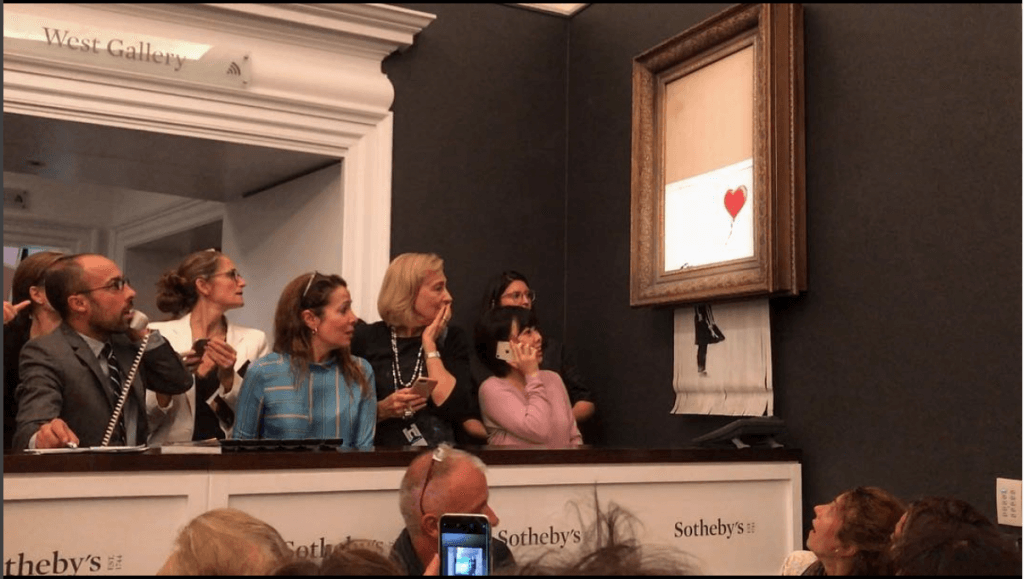
Banksy Shreds ‘Girl with Balloon’ Painting in Sotheby’s Auction Stunt, London 2018. Image © Banksy / Sotheby’s Auction House.
10.
The Venice Biennale, 2019
In May 2019, Banksy once again demonstrated his penchant for pranks at the Venice Biennale, one of the most celebrated art exhibitions in the world. In a post on his Instagram account, Banksy stated that he was “setting out his stall at the Venice Biennale” and added that he had never been invited to the event, despite its stature in the art world.
The elusive street artist created his own unauthorised exhibit in a small, unremarkable stand outside the main exhibition centre. The exhibit featured a large, eye-catching oil-painted cruise liner with a wooden sign “Venice in Oil” erected in front of the stall. The painting was constructed of several pieces that depicted a picturesque scene of Venice’s waterfront being marred by a massive cruise liner.
The exhibit showcased by Banksy was a clear commentary on the environmental crisis in Venice, a city that has been grappling with surging sea levels and an overwhelming influx of tourists. According to a report by UNESCO, the city’s iconic old buildings and landscapes are at risk due to climate change-induced sea level rise, extreme weather, over-tourism, and construction. The artwork highlighted the struggles of the city’s residents against the massive cruise ships that dock in its canals. Although Banksy’s exhibit was carefully planned, the unauthorized display was quickly detected by the police, who promptly escorted the vendor (and his paintings) away from the area.
Despite the briefness of its existence, Banksy’s exhibit managed to make a powerful statement about the environmental issues facing Venice and the rest of the world while also highlighting the challenges that street artists face in gaining recognition in the traditional art world.
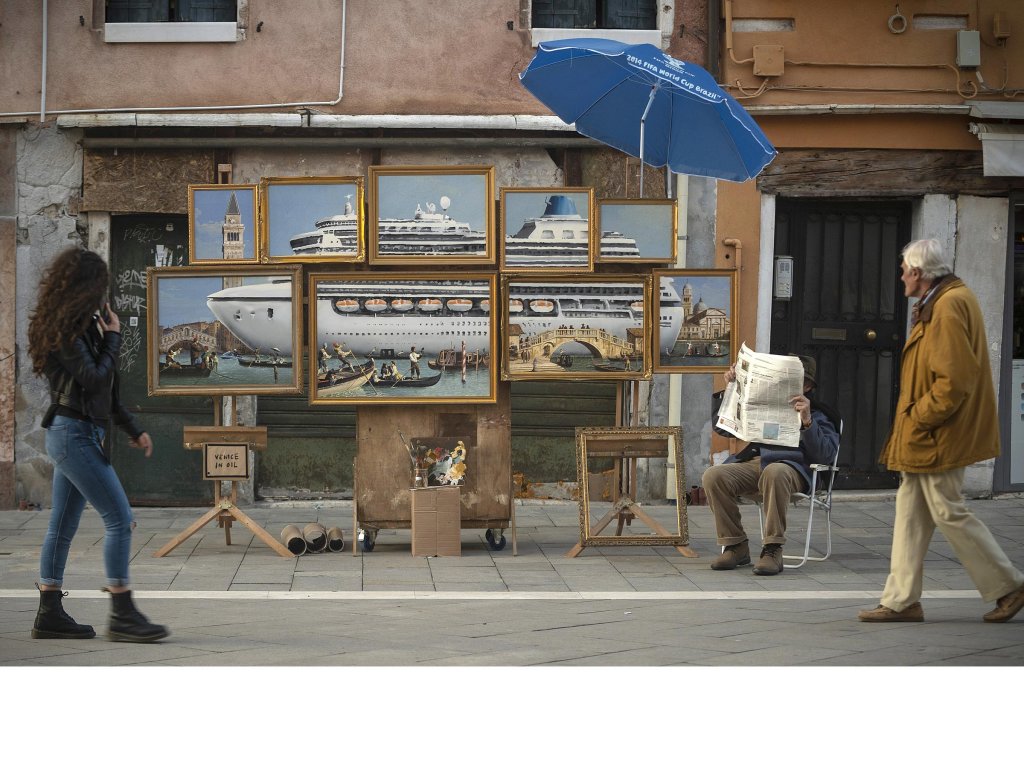
Banksy, “Venice in Oil”, Venice Biennale 2019. Image Copyright Banksy
Banksy’s pranks have amused and entertained people while raising important issues and questions about art, society, and politics. His work continues to inspire and provoke viewers around the globe, challenging the status quo and pushing the boundaries of what is considered art. Through his daring and thought-provoking pranks, Banksy has left an indelible mark on the art world that will continue to inspire future generations.
Visit our online store here to discover an extensive collection of Banksy’s thought-provoking artworks. Our selection includes iconic pieces reflecting society, politics, and culture, each with its unique message and style. If you’re searching for a particular artwork that’s been difficult to find, don’t hesitate to contact our team of experts. We’re here to help you acquire and add that elusive piece to your collection.